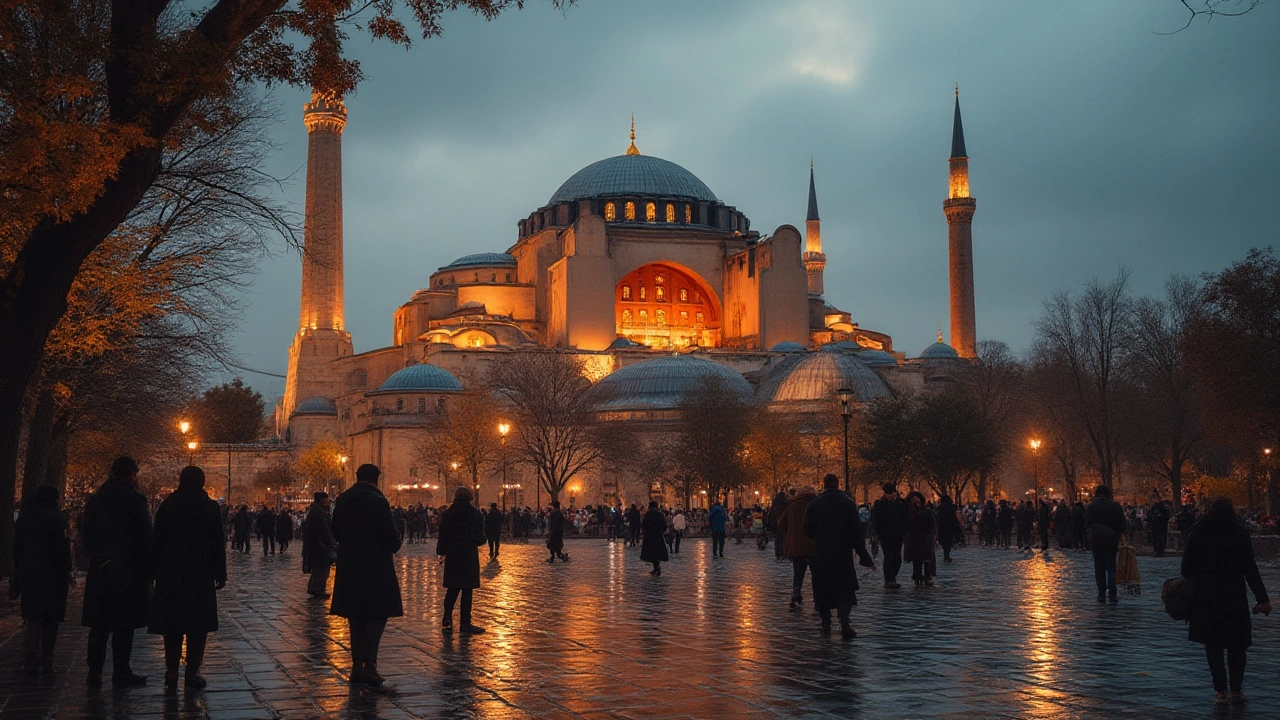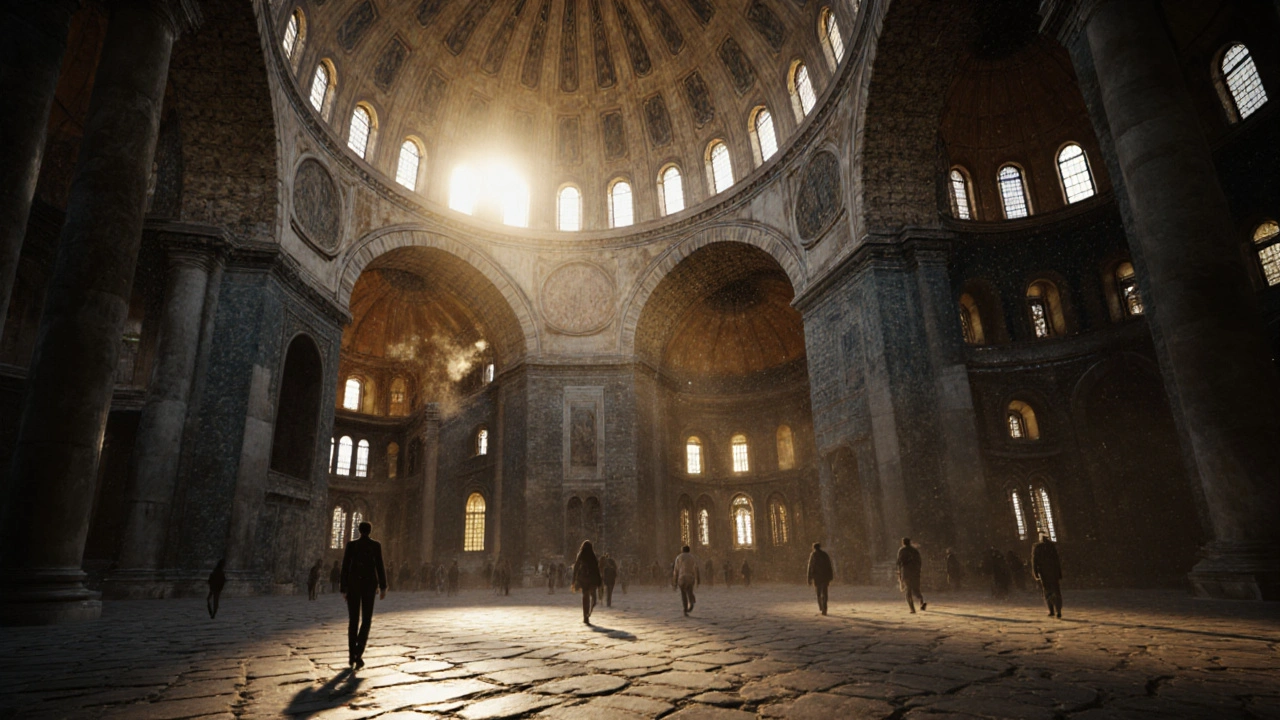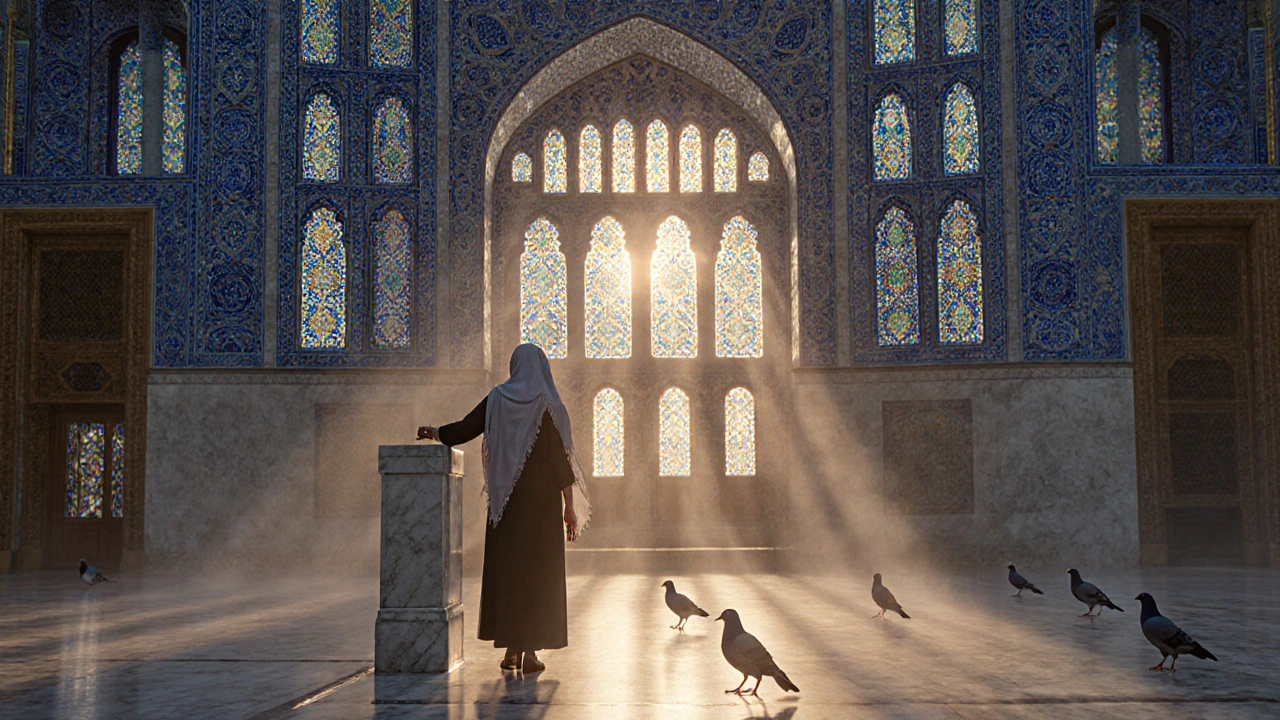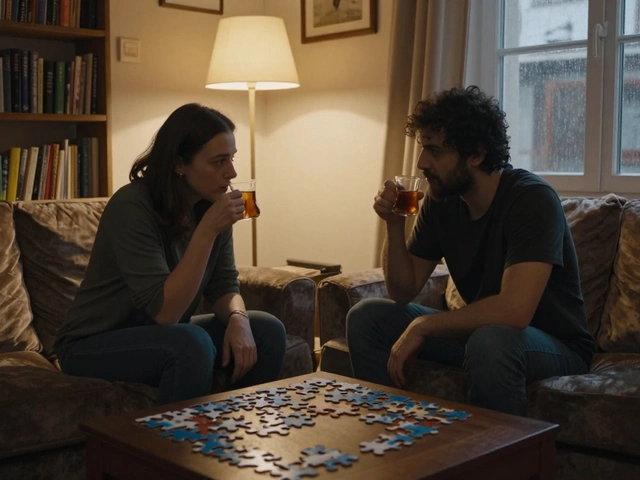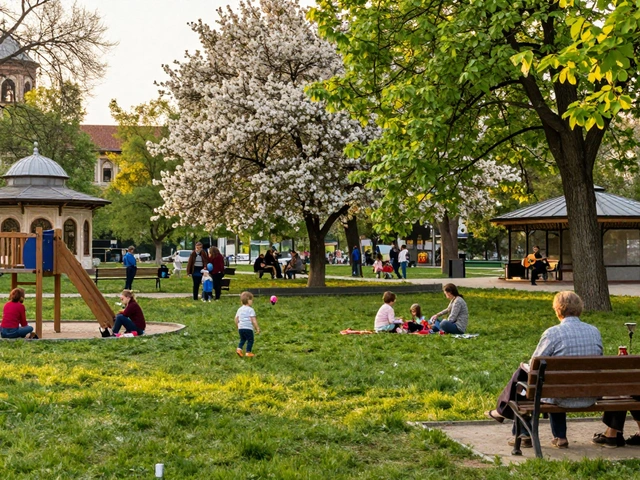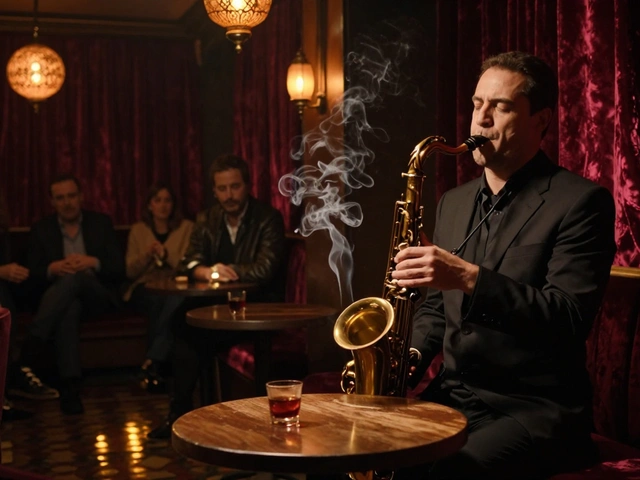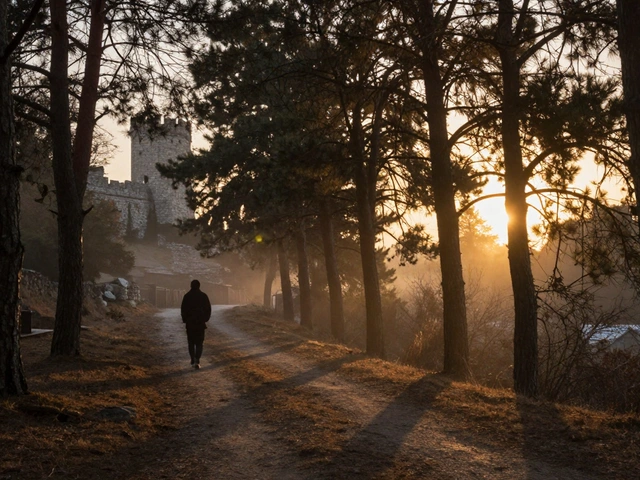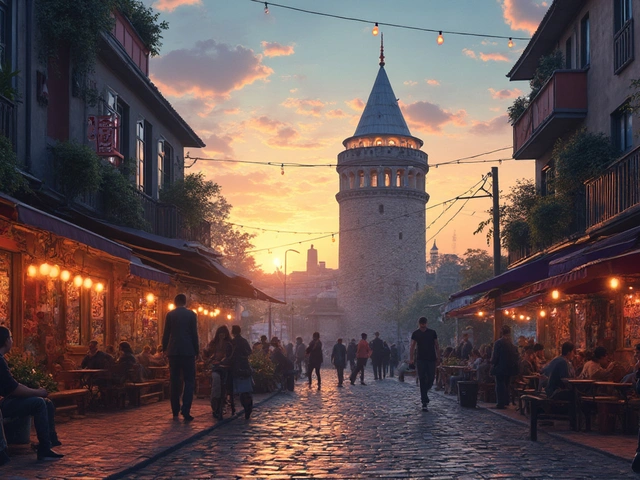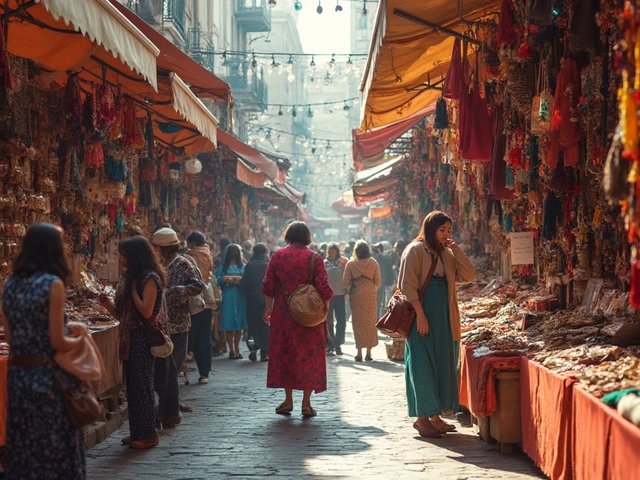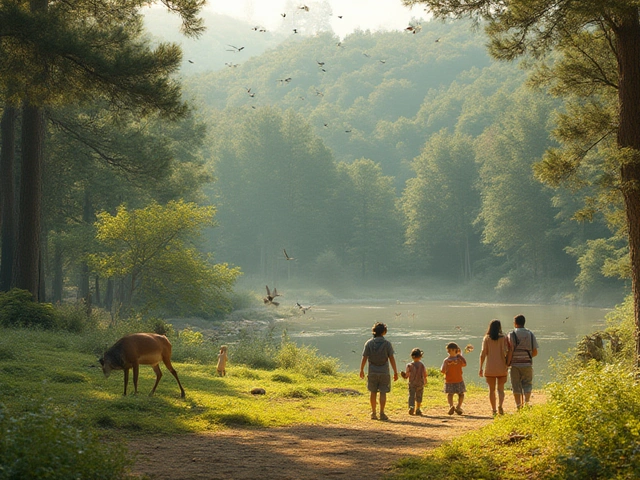If you live in Istanbul, or have even spent one sunny afternoon wandering through Sultanahmet, you know Hagia Sophia is more than just a postcard icon. This legendary building in the heart of Istanbul doesn’t just tower over the skyline; it dominates conversations about the city’s soul. Plenty of places claim to capture Istanbul’s unique balance of past and present, but only Hagia Sophia stacks up as both a stage for centuries of political drama and a quiet, echoing refuge on a rainy morning.
The Story Behind Hagia Sophia: Layers That Shaped Istanbul
Thinking of Hagia Sophia as “just” a museum or mosque barely scratches the surface. Its stones have felt the footsteps of Roman emperors, Byzantine priests, Ottoman sultans, and today, tourists, schoolkids, and locals grabbing a breather from the city rush. Built in 537 AD by Emperor Justinian as the Church of Holy Wisdom, Hagia Sophia was so grand that historic sources claim stunned Greeks said, “Solomon, I have surpassed thee!” (And if you mention that to your Turkish friends, watch them smile. It's a local classic.)
Architecturally, Hagia Sophia was the biggest church in the world for nearly a thousand years. It drew craftsmen, masons, and artists from every corner of the empire. Its huge dome—an architectural marvel supported by hidden arches—still inspires designers around the world. For generations in Istanbul, seeing the dome from the Bosphorus or the bustling ferry at Eminönü has signalled you’ve arrived home. The locals joke that, in old times, any earthquake news from the city always started with, "Is the Hagia Sophia alright?" That’s the emotional weight locals give it.
When Ottoman Sultan Mehmed II conquered Constantinople in 1453, he was so in awe of Hagia Sophia that he walked straight in and turned it into the city’s first imperial mosque. For Istanbulites, this wasn’t about erasing history—just flipping to the next page. Mehmed left the original mosaics, covering them rather than destroying (which is why, today, you can see glittering images of the Virgin Mary beside giant Muslim calligraphy discs in the prayer hall).
The shift from church to mosque, and later to museum in 1935 under Atatürk, shaped the multicultural patchwork that makes Istanbul what it is today. In 2020, Hagia Sophia returned to mosque status—and the city’s streets were buzzing with opinions, just like they always have been when change sweeps through this building. Yet, despite all these transformations, families from Istanbul's Asian and European sides keep meeting under its shadow—which says a lot about the spirit of the city. I remember bringing Ahmet here the first week he moved to Istanbul from Izmir; we grabbed tea at a nearby çay bahçesi, and he said, “Now I get it. Istanbul is all about layers.”
If you ask my neighbour, she'll tell you her proudest moment was guiding her nephew past the line of eager visitors, straight to a hidden marble door—one only true locals know. That door is said to bring luck if you manage to turn your thumb fully around in the carved hole. On public holidays like Republic Day, you'll always see kids and grandparents lined up, giving it a try. Istanbul’s people collect stories here the way cats collect sunny spots on its cobbled streets.
Given its rich history, UNESCO added Hagia Sophia (Aya Sofya, as you’ll see on signs) to its World Heritage List in 1985—not just for its beauty, but for its living testimony to religious tolerance, artistic brilliance, and Istanbul’s talent for reinventing itself. Most guidebooks mention this, but they usually skip the little stuff: that nearby baklava shops (try Hafiz Mustafa's on Divan Yolu) flood with visitors during Ramadan, or that local artists still come in the hush of dawn to sketch the mosaics in soft light.
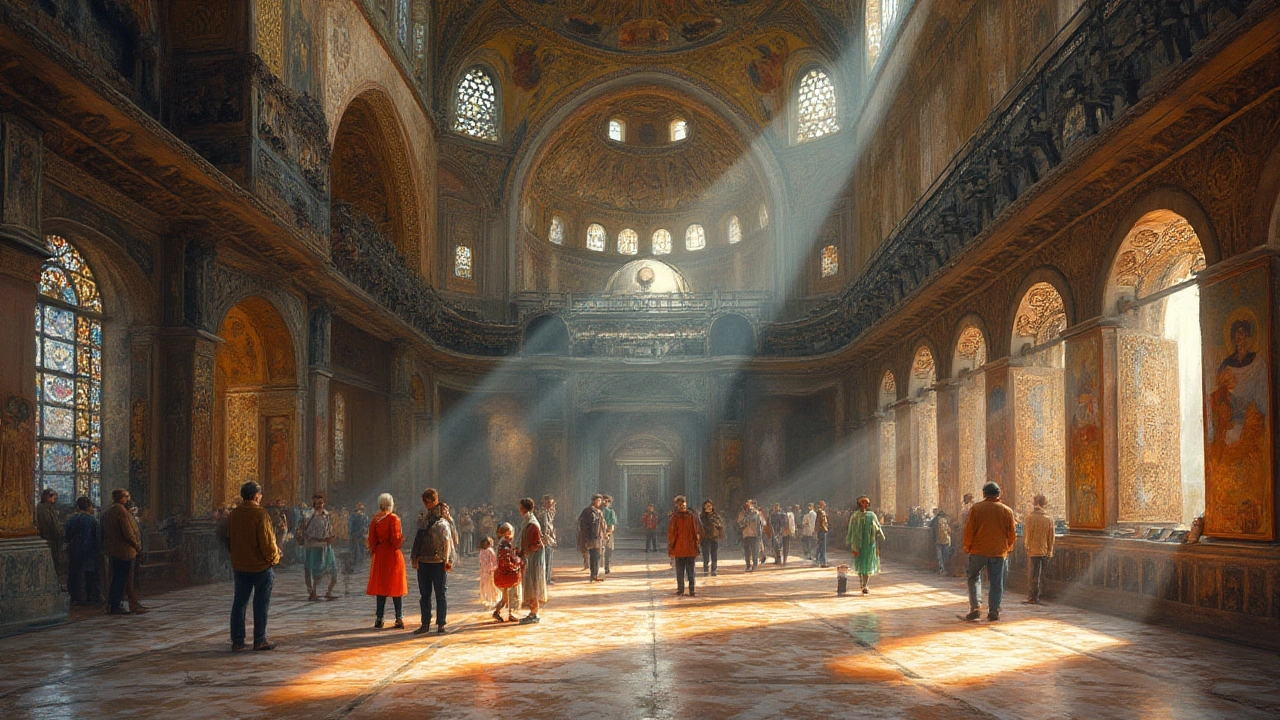
The Architecture and Atmosphere: A Masterpiece in Stone and Light
If you ask someone from Istanbul where to feel tiny and inspired at the same time, they’ll probably nudge you towards Hagia Sophia. The first thing to hit you isn’t just the giant dome (31 meters wide!) but the play of light, shifting across marble floors worn smooth by millions of feet. Voices echo softly, bouncing off columns brought from ancient Ephesus and the Temple of Artemis—imagine the stories these stones could tell.
Step inside, and you'll spot the omphalion—those red and purple stones where emperors were crowned. Not far from there, you’ll see a blend of gold Byzantine mosaics and sweeping Islamic calligraphy. Most people don’t realize it, but the massive medallions, written in Ottoman script, were added in the 19th century by master calligrapher Kazasker Mustafa Izzet Efendi. People from Istanbul pride themselves on spotting restoration details, so don’t be surprised if your local friend points out where gold mosaics peek through the plaster, or shows you secret graffiti from Viking mercenaries scratched into the marble balcony (yes, Vikings wandered in here!).
For the locals, it’s the little rituals that define a visit. On Friday mornings, catch the sunlight filtering through upper gallery windows onto the main floor, while someone’s grandparent quietly recites a prayer in the corner. Couples sometime sneak away to the “weeping column”—a pillar said to offer cures if you stick your thumb in and turn 360 degrees (good luck, my thumb’s never done a full circle!). Istanbulites pass along these quirks generation to generation, turning every trip into a treasure hunt: finding serene corners for reflection, or that perfect selfie spot with the Blue Mosque peeking out of the window across the square.
Outside, the scene pulses with life. Street vendors sell roasted chestnuts in winter and fresh simit year-round. Fishermen cast lines into the Golden Horn, with Hagia Sophia as their backdrop. And on quiet Sunday evenings, local choirs sometimes rehearse in hidden corners of nearby churches, their notes drifting towards Hagia Sophia’s silhouette.
Need a tip? If you're a resident or have a Turkish residence card, show it at the entrance for free access during prayer times, but check the hours—a local hack many tourists don’t know about yet. Sundays and early weekday mornings are calmest. Want that iconic photo with nobody in the background? Arrive just after dawn, or linger till sunset. And if you follow Istanbul-based Instagrammers (like @istanbultimes or @sehrinhikayesi), you’ll pick up fresh angles that most guidebooks overlook. Bring socks—remember, shoes come off in mosques—and if you’re carrying a camera, turn off the flash; no one wants to startle the nesting swallows overhead.
Yet it’s not just visuals that matter. Hagia Sophia smells of incense, filtered sunlight, and—oddly—sea air from the Bosphorus. That unique blend, familiar to locals, is what turns every visit into an experience you carry away long after the echoes fade.
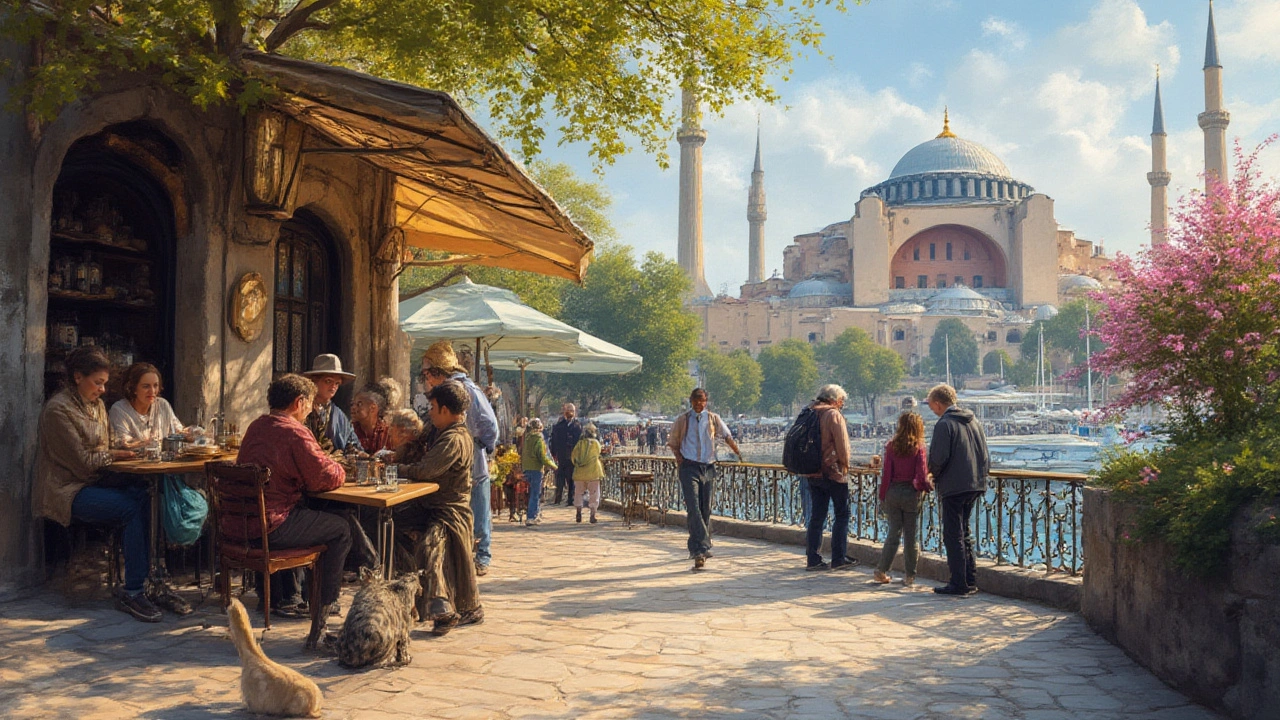
Making the Most of Your Visit: Insider Tips and Local Traditions
Visiting Hagia Sophia isn’t a checklist moment; it’s a whole experience, woven into Istanbul’s rhythms. Skip the obvious advice—here’s how to see it like a local. First, consider timing. Avoid public holidays like Bayram if you dislike crowds. But if you thrive on buzz and don’t mind lines, those days bring everything from marching bands to food stalls along Sultanahmet Square, making it perfect for people-watching.
Public transport is hands-down the best way in. Trams (T1 line, Sultanahmet stop) drop you within steps of the entrance, and you’ll pass some of Istanbul’s quirkiest bookstores and cozy kafes. I always pop by Hafiz Mustafa for a sugar fix, then linger at one of the outdoor tea gardens strung with lanterns. On weekends, local street musicians set up along the path to Hagia Sophia—worth a pause, especially when they’re playing old Turkish classics.
Dress modestly—women usually wrap a scarf in the main prayer hall, and there are free shawls at the entrance if you forget. If it starts raining (as it does, unpredictably, in Istanbul’s springtime), don’t run for cover. Listen for the echo of rain through Hagia Sophia’s enormous narthex—it’s a sound that has calmed the city through centuries of storms and sultans alike.
Want to brighten up your Instagram or just feel the city’s pulse? After seeing Hagia Sophia, stroll down to Arasta Bazaar. Unlike the busy Grand Bazaar, this smaller local market is full of handmade ceramics, Iznik tiles, and places to sip Turkish coffee. Istanbulites love these little bazaars—look for shops like Dervis, where young designers bring modern twists to Ottoman patterns. Or, for a quick bite, try Kürt böreği from Tarihi Sultanahmet Köftecisi—you’ll see families lined up every lunch hour.
You don't have to be an architecture buff to enjoy Hagia Sophia, but a little background adds a lot. Look for the preserved apse mosaic of Mary and baby Jesus—locals believe it brings luck, especially if you catch the light glancing off the gold tiles in the late afternoon. On Fridays, the call to prayer overlaps with the distant bells from the nearby Church of St. George, a gentle reminder of Istanbul’s patchwork of faiths, languages, and traditions.
For families, join one of the child-friendly tours offered by local guides—these are less about dry facts, more about stories (like the legend of the weeping column or lost emperor jewels hidden in the marble). If you’re passionate about photography or art, consider booking a spot with an Istanbul-based photo walk, many of which start at Hagia Sophia and end at the sea walls or Topkapi Palace.
Stick around Sultanahmet at sunset. Locals will grab grilled corn and wander the gardens between Hagia Sophia and the Blue Mosque, snapping family photos while street cats stretch in the shadows. In early autumn, festivals pop up here: don’t miss open-air concerts or the city’s Literature Nights, where poets read by moonlight to packed crowds—an echo of Istanbul’s reputation as a city that never stops reinventing itself.
Hungry after your visit? Try a traditional Turkish breakfast (kahvaltı) at Kale Café by the Bosphorus, a short tram ride away. Or duck into Giritli for Aegean meze in a quiet garden down the street. Istanbul’s dining scene flanks Hagia Sophia—wander a few blocks in any direction and you’ll hit everything from fancy rooftop terraces to cozy family-run lokantas.
Don’t forget—Hagia Sophia is not just for tourists. It’s where Istanbulites bring family, meet up after a shift, or sit quietly during Ramadan nights. If you watch carefully, you’ll spot school groups leaving flowers for long-gone emperors, retired teachers sketching the dome, and street photographers waiting for that magical, golden hour. Spend a morning just sitting on the quiet benches in the courtyard. Let the city’s sounds wash over you. It’s in those quiet moments that you’ll really feel the heart of Istanbul.
So next time you’re out exploring the city’s endless streets, give yourself plenty of time at Hagia Sophia. It’s not just an “attraction”—it’s Istanbul’s memory in stone, living through all the changes, adapting yet never truly changing who it is. Just like the city itself.
